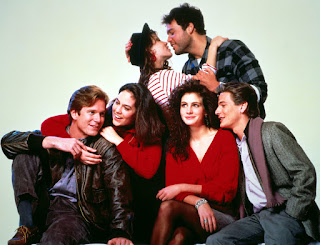Misty Copeland - éloges pour une ballerine
Misty Copeland - éloges pour une ballerine
On a pleasant June evening in New York, the year is 2012, Hundreds of classical music and Dance connoisseurs congregated at the Metropolitan Opera ( lovingly called the MET) with a subdued sense of apprehension. The imposing entrance of the MET displayed a huge banner ,gently flapping in the light breeze, announcing the performance of “Firebird” - one of the renowned, artistically sublime and mesmerizing Ballet ever composed. All that the banner had on it was a flaming girl in red bending in a classic ballet position, with effulgent shades of crimson and violet emanating from her body. And in between those profusion of dark colors, one could make out the focused, chiseled face and structure of Misty Copeland – the African- American ballet dancer, who was to play the lead role of Firebird in Igor Stravinsky’s Russian folk tale adaption. It was in 1910, that the world of art, chanced to bring together three genius in their respective fields to collaborate on music. It was a mystical Union. Sergei Diaghilev - Russian, master choreographer, creator of the Ballet Russes, a theater where representation of ballet for the new-classical age revitalized the brilliant dance form that Catherine de Medici imported from Italy to France during renaissance; , Igor Stravinsky - the young Russian composer, whose neo classical symphonies, polyphonic arrangements of rhythms and bold interpretations of Ancient folk tales ushered a new wave of compositions for the 20th century that was to startle and entertain arty public immersed until then only in solemn strains of traditional Western classical music; and, Nijinsky , the greatest Ballet Dancer ever to have graced the stage, whose singular concentration of energy, madness, verve, precision and talent elevated the Ballet to an aesthetically divine experience. The three of them were to produce some of the finest, artistically challenging productions over a period of twenty years. Firebird was their crown jewel. In it, they bought together the unique elements of their art to a consummating peak of excellence; and as a ballet piece, it presented the ultimate challenge for any dancer attempting to scale the heights of tempestuous emotion, physical energy and perfect unbroken rhythm this piece required. It was a wild story of Fantasy rooted in the archetype of good and evil, destruction and regeneration; and it required every ounce of energy, every range of emotion, and every step in a Ballerina’s repertoire to even come close to pulling it off. And for every sincere Ballerina, to play the soloist as the “Firebird” is a life fulfilling moment. Only the very best, the most dexterous and most talented get to play that role. And Misty Copeland, the young 16 year Black American, Born and raised in relative poverty, prodigiously gifted, immensely articulate - found herself, after years of personal and professional struggle – at the pinnacle of her ballet career. She was to play the Firebird at the MET.
Misty was not new to fame and accolades. Yes, she was a Black American, one of six kids, reticent and introverted, grew up for most part in a motel. But since the age of 13, when her mother introduced her to ballet, it was almost as if she had found that spark of true self. Ballet stirred within her like a coiled serpent waiting for that gentle tap on its head. Whoever saw her glide as a child on the floor instinctively knew that here was a prodigy, a genius waiting to unfold. At eighteen , she moved to New York to join the American Ballet company, a prestigious platform for the very best dancers, and quickly her great posture, impeccable poise and abundance of energy was noticed by critics and mentors. It was mentally tough to be in the midst of racially different crowd, adapt and perform. But that is the hallmark of character and greatness, and Misty poured herself into her art. Ballet was her, and she was Ballet. This singular pursuit of perfection quickly got her to dance in some of the theater’s prestigious programs In Tchaikovsky’s Swan lake and Paux de deux; in Ludwig Minkus “La bayadere” and in Le corsaire - Misty played prominent roles in these Ballets.. None noticed the difference in her skin color, when she was on stage. Electrifying and breathtaking was her presence. But in all these appearances, she was only playing a prominent part in a bigger drama, and never the heroine, so to speak. To play a principal role in a ballet is the apogee of this art, and Firebird gave her that opportunity. However, she knew that playing the firebird was a daunting task, simply because one of the greatest western dancers of the age had set the benchmark for that role. Nijinsky - the mad, mystical dancer had donned that role in 1910, of whom Rodin (learned, gifted art critic) wrote “In Nijinsky, the harmony of Mimicry and physical expression is perfect: his entire body is the representation of the will of the spirit…”. And firebird is full of spirit. From the initial momentum of the piece when Firebird descends to the stage in a glow of fire, till her alchemical transformation into harbinger of good, the role encapsulates all nuances of ballet and its spiritual power. Stravinsky’s music is not merely powerful , but rumbles with passion and fury till it reaches its peaceful crescendo. Each movement is approximately fifteen minutes, and stretches the dancer to their utmost physical and emotional limits .Only a mad man or a genius could keep pace and dance with the intensity required.. And Misty combined both in equal measure .
Though Misty premiered this role on a smaller scale earlier in California , It was at the MET the real test lay. The solemn, Majestic setting of the Lincoln center is probably the most prestigious stage for a Ballet Dancer to step on,, and She knew that her performance here was her proverbial door to immortality. No black woman had ever danced as the firebird in that august setting. And for misty, it was not merely personal redemption as a gifted artist who had to fight through odds to reach this position, , but that a slice of history was being made for African –Americans in an arena traditionally dominated by White skin, pale color and skinny bodies. Misty was all that a Ballet Dancer should not be. She was tall, she was 29, big chested, black, captivating, articulate, loves doughnuts. All stereotypes were being broken here, and destiny beckoned with eager arms.
However, Not many knew that Misty was suffering with stress fractures in the region of Tibia (the most important bone below the knee for a Ballet dancer) days before her performance. During rehearsals, she felt excruciating pain each time she jumped, or tip toed like a fawn. For a ballet dancer, it was the ultimate curse but not her. She would go back to her apartment and wince, cry with pain; but she knew ,as every great artists knows, that such chances as this come but once in a life time; and this performance at the MET was to be defining moment not only for her, but for the aspirations and dreams of an entire community. Disregarding her mounting pain, she graced the stage in crimson red and danced her way to perfection and into hearts of thousands who watched with stunned silence the evocative interpretation of Stravinsky’s,Diaghalievs and Nijinsky dream. It was a spotless solo performance. After the 20 minute climax routine, everyone in the hall was up and applauding, almost endlessly. They had witnessed a historical performance - one that would forever change the five hundred year tradition of Ballet.
In June last year, ABT (American Ballet theater) announced her as their principal dancer. The highest honor to be bestowed. It is an official recognition of the fact that Ballet is no more the preserve of the white race. After a century of struggle, when many aspiring Black dancers have had to avoid limelight, Misty at the age of 30, with just a few more years of Active dancing left in her has taken this art form to a newer, more embracing level. Her tremendous resilience after her surgery, that unique brand of intellectual articulation both as a writer and a public speaker, multi million dollar deals that showcase her stunning profile - all of them point to one simple fact : In the controversial debate that has raging in humanities and sciences about “nature” and “nurture”, Misty has proved that it needs both. The standard social science model, as strongly opposed by social scientists like Steve Pinker and others -where genetic propensities are considered valueless, and environment is everything - is rendered futile in her case. She was gifted to dance, and right environment allowed it to blossom forth. And of course, she was able to focus and raise herself above problems that nagged her. That is obviously recipe of success : Talent, nurture and determination.
The world of ballet is not as popular as Hollywood cinema, and not many would know of Misty Copeland and her achievement. Therefore this essay. Firebird is my favorite Ballet theme, and recently, I chanced to see a recording of Misty dance. There were tears in my eyes. Never have I seen music and dance come together with such grace, intensity and poise. It was a blessing, and I felt I needed to write about this extraordinary lady. It is more an offering of gratitude than anything else.
As I watched Misty dance with ecstatic abandon, a verse from the Bhagavad gita constantly kept surfacing to my mind. Perhaps, it best defines her attitude and accomplishment
Uddharad atmanatmanam natmanan avasadyet
Atmaiva hy atmano bandhur atmaiva ripur atmanaha.
Atmaiva hy atmano bandhur atmaiva ripur atmanaha.
"Let each man raise oneself through the self;
Your self is your friend, and it can become your foe as well.
So rise Arjuna, and live by the SELF
Your self is your friend, and it can become your foe as well.
So rise Arjuna, and live by the SELF
God bless..
Yours in mortality,
Bala






Comments